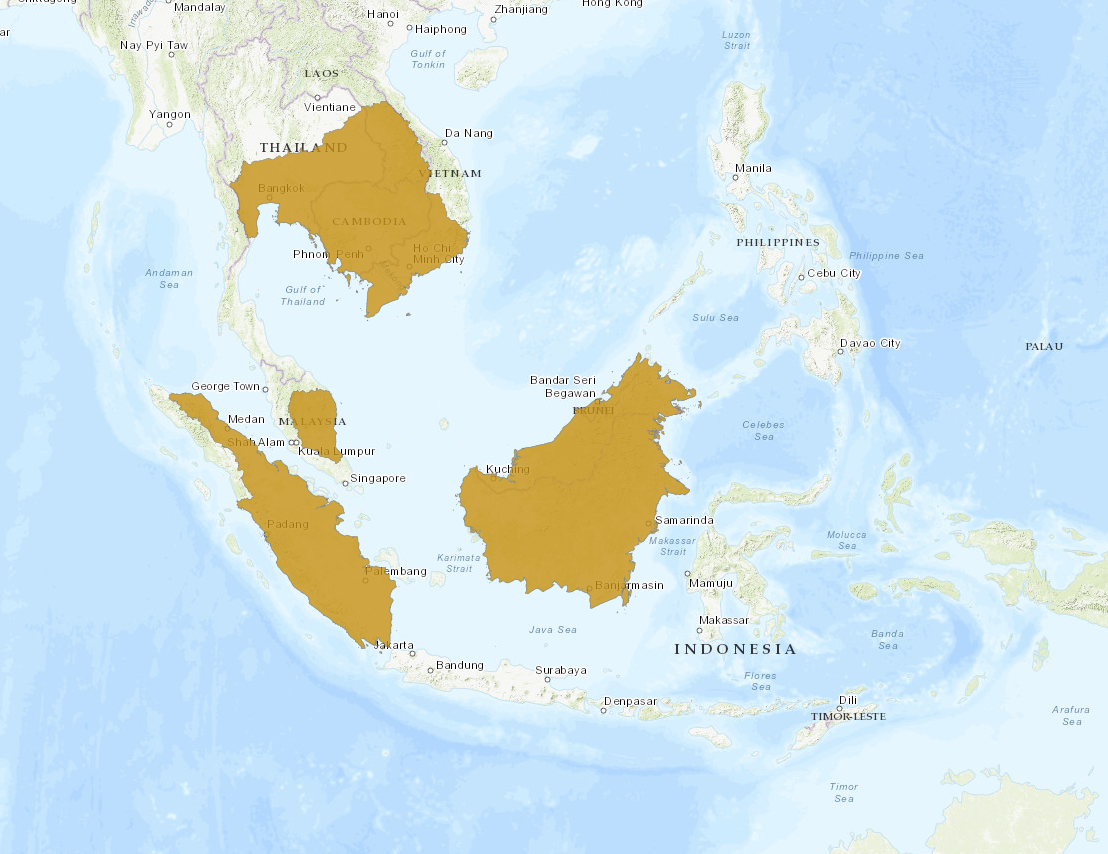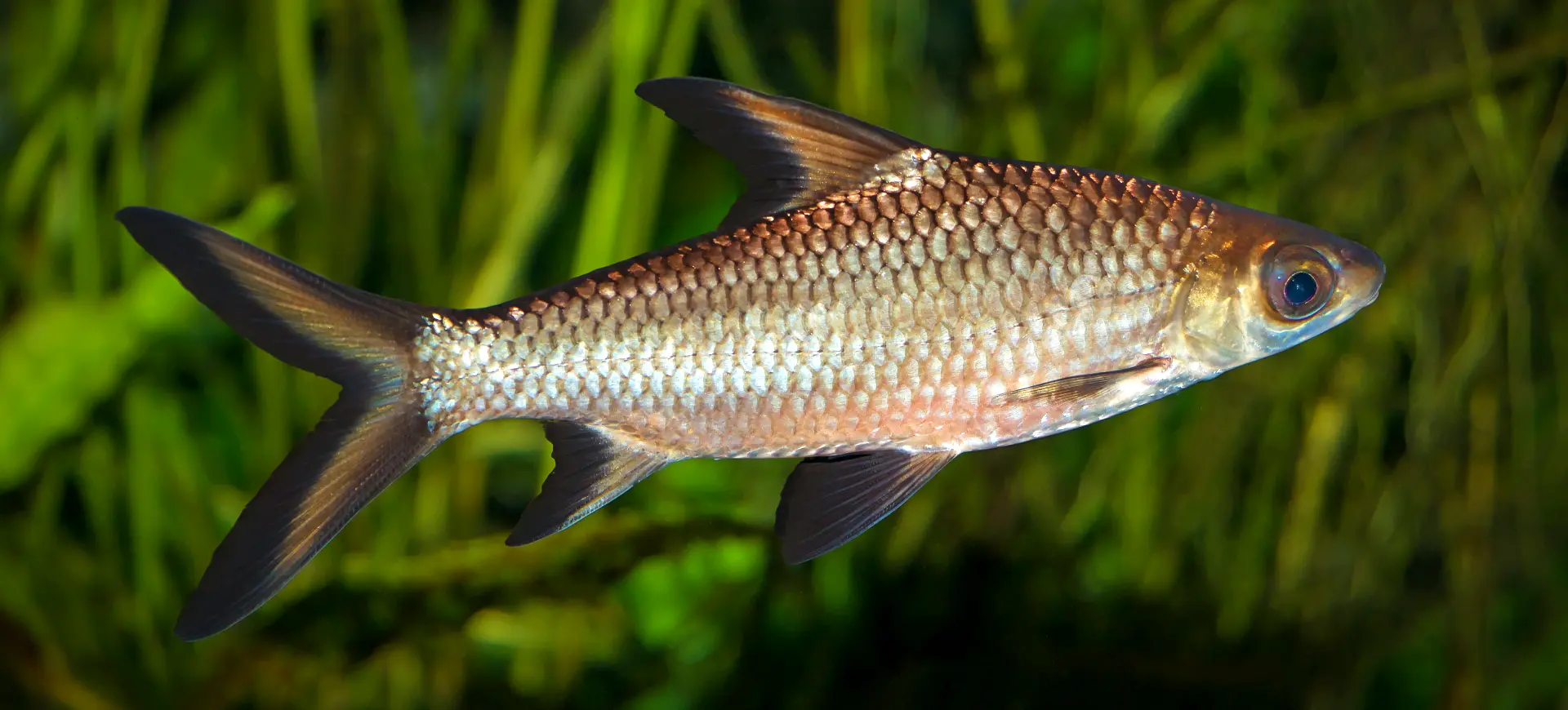Overview
The Tinfoil Barb, scientifically named Barbonymus schwanenfeldii, is a large and active freshwater fish native to Southeast Asia. Known for its bright silver body and reflective scales resembling tinfoil, this species is popular among aquarium enthusiasts for community tanks. Adult Tinfoil Barbs can reach up to 14 inches in length in the wild, displaying a streamlined body with a red dorsal fin and sometimes red-tipped fins, adding to their visual appeal.
These highly social fish prefer to live in groups, thriving in large aquariums or outdoor ponds with ample space to swim. Tinfoil Barbs inhabit rivers and streams in their natural habitat, adapting well to varying water conditions. Their omnivorous diet consumes plants, small invertebrates, and residue, making them relatively easy to feed in captivity. However, their size and schooling nature require significant space and resources, challenging aquarists to meet their needs adequately.
The Tinfoil Barb’s habitat is increasingly threatened by deforestation, pollution, and dam construction, leading to concerns about their population in the wild. Conservation efforts focus on habitat preservation and sustainable aquarium trade practices to ensure the survival of this species in its natural environment and captivity.
Taxonomy
Kingdom
Phylum
Class
Order
Family
Genus
Species
Type
RANGE
Current distribution:
Tinfoil Barbs are widely distributed across Southeast Asia, although their populations are affected by habitat loss and degradation. Efforts to monitor and conserve their natural habitats are crucial for ensuring the survival of this species in the wild. In addition to their presence in natural waterways, Tinfoil Barbs are commonly found in the aquarium trade, where they are valued for their striking appearance and behavior.
Conservation measures, including habitat protection and sustainable trade practices, are essential for maintaining the wild populations of Tinfoil Barbs and ensuring that aquarium enthusiasts can enjoy this species without contributing to its decline in nature.
Physical Description:
Tinfoil Barbs are known for their large, elongated bodies covered in shiny, metallic scales that give them a tinfoil-like appearance. The fish typically exhibit a silvery or golden body with a horizontal black line running along their sides, from the gills to the base of the tail. Their fins, especially the dorsal fin, are often edged in vibrant red or orange, contrasting their metallic bodies.
As juveniles, Tinfoil Barbs are more brightly colored than adults, with their fine red and orange hues particularly pronounced. Their color may dull slightly with age, but their size and active swimming behavior continue to make them a captivating sight in large aquariums or ponds. These physical characteristics contribute to their popularity among aquarists and aid in identifying them in the wild.

Lifespan: Wild: ~10 Years || Captivity: ~15 Years

Weight: Male & Female: 7-21 oz (200-600 g)

Length: Male & Female: 7-14 in (18-35 cm)
Characteristic:
Native Habitat:
Tinfoil Barbs are native to Southeast Asia’s river basins and waterways, including Thailand, Borneo, Sumatra, and the Malay Peninsula. They prefer riverine environments with clean, flowing water and abundant vegetation. These habitats provide the necessary resources for their omnivorous diet and support their social and active lifestyle.
The degradation of their natural habitats due to human activities poses a significant threat to their populations. Conservation efforts are needed to protect these environments from pollution, deforestation, and the impacts of dam construction, which can alter the natural flow and quality of water in their habitats.
Climate Zones:
Biomes:
WWF Biomes:
Biogeographical Realms:
Continents:
Diet:
Diet & Feeding Habits:
Tinfoil Barbs are omnivorous, feeding on various food sources, including aquatic plants, algae, small invertebrates, and detritus. This varied diet makes them opportunistic feeders that can adapt to available food sources in their environment. In captivity, they should have a balanced diet that includes high-quality commercial fish food, vegetables, and occasional live or frozen foods to mimic their natural diet.
Feeding Tinfoil Barbs a mixture of flake, pellet, and vegetable-based foods, along with periodic treats of live foods, can help ensure they receive the nutrients they need for growth and health. Feeding them in amounts they can consume within a few minutes is important to prevent overfeeding and maintain water quality in the aquarium.
Mating Behavior:
Mating Description:
Breeding Tinfoil Barbs in captivity can be challenging due to their size and the specific conditions required for spawning. In the wild, they breed during the rainy season when water levels rise and the flow increases, providing ideal conditions for egg laying and fertilization. Females scatter their eggs among vegetation, fertilizing them externally by males.
In captivity, replicating the natural triggers for breeding, such as changes in water level and flow, can encourage spawning. However, successful breeding requires large tanks with controlled conditions and careful water quality management. The lack of parental care post-spawning means that eggs and fry are vulnerable to predation, even from their parents, necessitating their removal to a separate rearing tank.
Reproduction Season:
Birth Type:
Pregnancy Duration:
Female Name:
Male Name:
Baby Name:
Social Structure Description:
Tinfoil Barbs are social fish that naturally form schools in their native habitats, exhibiting cooperative swimming and feeding behaviors. This schooling behavior is essential for their well-being, providing security and social interaction. In captivity, keeping Tinfoil Barbs in groups is recommended to replicate their natural social structure and ensure their health and happiness.
Understanding the social dynamics of Tinfoil Barbs, including their schooling behavior and interactions within groups, can aid in their management in both wild and captive environments. Providing conditions that support their social needs is key to maintaining healthy and vibrant populations.
Groups:
Conservation Status:
Population Trend:
While the Tinfoil Barb has not been specifically evaluated by the IUCN, its populations in the wild are believed to be affected by ongoing habitat degradation and pollution. The species is commonly bred in captivity for the aquarium trade, which helps reduce the demand for wild-caught individuals but does not address the root causes of their habitat loss.
Conservation efforts for Tinfoil Barbs and similar species focus on protecting natural habitats and promoting sustainable practices within the aquarium trade. Educating aquarists about the origins and ecological needs of the fish they keep can also contribute to conservation awareness and action.
Population Threats:
The main threats to Tinfoil Barbs in the wild include habitat destruction due to deforestation, pollution from agricultural runoff and industrial waste, and the construction of dams that alter natural water flow. These factors can lead to the degradation of their riverine environments, impacting their food sources and breeding grounds.
Sustainable management of waterways and surrounding lands is essential for the conservation of Tinfoil Barbs and the diverse ecosystems they inhabit. Efforts to mitigate pollution, preserve natural vegetation, and maintain the integrity of rivers and streams are crucial for their survival.
Conservation Efforts:
Conservation efforts for Tinfoil Barbs include habitat protection and restoration, research into their ecology and population dynamics, and the promotion of responsible practices in the aquarium trade. Establishing protected areas and implementing regulations to control pollution and deforestation can help preserve the natural environments essential for their survival.
Collaboration between conservation organizations, local communities, and the aquarium industry is necessary to develop and implement effective conservation strategies. Public education on the importance of freshwater biodiversity and species’ ecological role, like the Tinfoil Barb, can foster support for these initiatives.
Additional Resources:
Fun Facts
- Tinfoil Barbs get their name from their shiny, metallic scales that reflect light like tin foil.
- They are fast swimmers who can cover significant distances for food or when evading predators.
- Tinfoil Barbs are often mistaken for marine fish due to their silver appearance, but are strictly freshwater species.
- Their peaceful nature makes them suitable for large community tanks, where they can be kept with other non-aggressive species.
- Tinfoil Barbs can jump, so aquariums or ponds should be covered to prevent escape.
- In the wild, Tinfoil Barbs are important for controlling insect populations, including those that can transmit diseases to humans.
- They have a broad diet that makes them effective at controlling algae and detritus in their environment.
- The vibrant red on their fins becomes more pronounced during mating season, adding to their visual appeal.
- Conservation of their natural habitats benefits Tinfoil Barbs and a wide range of other aquatic and terrestrial species.
- Tinfoil Barbs’ adaptability to different water conditions has contributed to their popularity and success in the aquarium trade.









